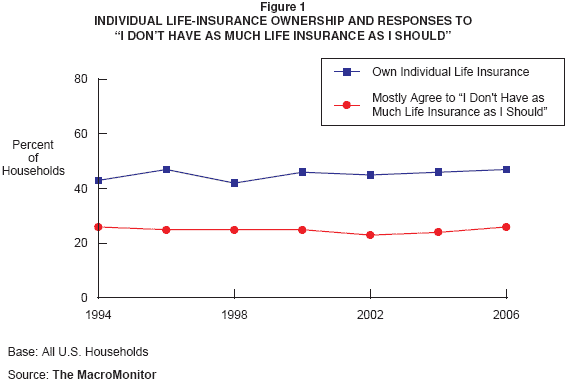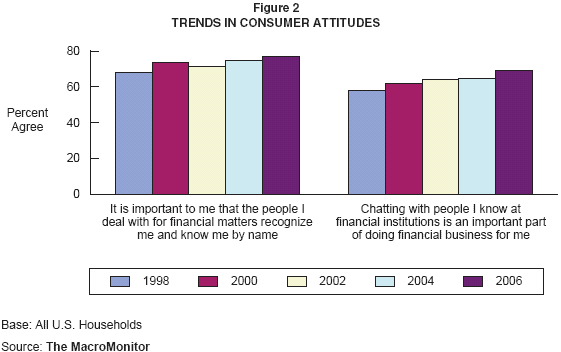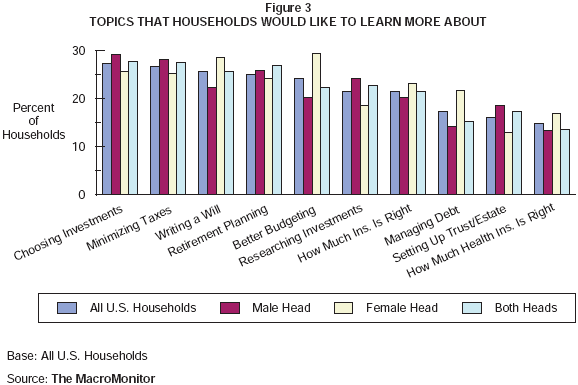MacroMonitor Market Trends July 2007
MacroMonitor Market Trends highlights topical news and trends of interest to you and your colleagues. If you would like more information about the items in the newsletter or would like to discuss other ways that we can assist you in your research and marketing efforts, please contact us.
In this issue:
Life Insurance: Stable Trend—Changing Role
In the past dozen years, the household population of the United States has increased by 13.4%, from slightly fewer than 108 million economic households in 1994 to more than 122 million in 2006. Although the incidence of individual life-insurance ownership is higher now (47%) than it was in 1994 (43%), it is now the same as it was in 1996. In the past decade, the life-insurance industry has kept pace with the growth in the general population, showing steady, if modest, growth since 2002.

It is critical that life-insurance providers monitor and anticipate the needs of consumer cohorts that view their needs, resources, and constraints from very different perspectives. The MacroMonitor provides both an overview of and insight into the needs, behaviors, and attitudes of U.S. households with regard to life insurance.
Peer-to-Peer Lending on the Rise
A new threat to traditional lending through banks and other financial institutions is on the horizon: peer-to-peer lending. The peer-to-peer lending model allows would-be borrowers to post a brief online request for funds for any of various reasons, such as purchasing a new car or funding a business venture or vacation. Potential individual creditors who are looking for a return on an investment can review these requests and make loans. Online businesses such as Prosper. com, Zopa (a British company), and Circle Lending (entrepreneur Richard Branson's latest acquisition) are responsible for posting the credit scores of would-be borrowers and facilitating payments between parties. These companies aim to lower the cost of borrowing and raise the returns on lending by cutting out the rate arbitrage practiced by banks and mortgage companies and instead charging a small fee to users.
Although the MacroMonitor has not yet tracked the behavior or attitudes of individuals engaging in this new financial activity, some insight into consumer demand is available through segmentation and analysis of our attitudinal data on consumers. The following MacroMonitor trends of households' agreement with two attitude statements show households' preferences for the personal service that peer-to-peer lending offers—incidences that were high in 1998 and that continue to inch upward.

The MacroMonitor contains a cornucopia of trends on consumers' attitudes toward financial institutions and numerous ways to segment the U.S. household population for in-depth analysis of market opportunity.
Sex Differences in Financial Decision Making
In the past 50 years, a woman's participation in household finances has moved from typically handling just the day-to-day household expenses to being active in every aspect of the household's finances. In 2006, our data show that a higher percentage of women than of men handle most of the major financial affairs of the household. Yet the design, marketing, and sales of most financial products and services, as well as financial planning and advice, remain rooted in dominantly male origins.

People in the financial industry talk about marketing to women and the "new" women's market, but few realize just how institutionalized and entrenched the preconceived notions and paternalistic approaches associated with most financial services are. When we look at a selection of topics that households indicate that they would like to learn more about, we find many significant differences between households with a male primary financial-decision maker and households with a female primary financial-decision maker. Households in which only the male is the primary decision maker are more likely to want to learn how to choose and research investments, minimize taxes, and set up a trust or estate. Households in which only the female is the primary decision maker are more likely to want to learn how to budget better, manage debt, and write a will and to know how much health insurance is right.
These responses are a strong indicator that men and women are very different in their approaches to financial decision making. A more in-depth study of these households in terms of their demographics; the financial products, services, channels, and advisors they use; and their recent actions, financial attitudes, goals, preferences, and motivations would provide critical insights into how financial institutions need to change in order to serve women better. Not only do women now outnumber men as primary financial decision makers, and not only do women live longer than men, but women's participation in the entirety of financial decision making for the household will likely continue to grow. And for the moment, the status quo of financial-services marketing does not effectively address women's needs and desires.